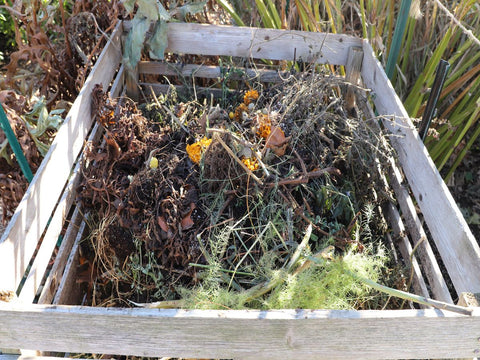As more and more people take up gardening, raised bed gardening has become increasingly popular. One of the most effective and sustainable approaches to filling a raised garden bed is known as lasagna gardening, also called sheet composting. This method is efficient and environmentally friendly, making it an ideal choice for novice and experienced gardeners. In this post, we will delve into the details of lasagna gardening and provide a step-by-step guide on implementing this approach in your raised garden bed.
What is Lasagna Gardening?
Lasagna gardening is a no-dig, no-till gardening method that involves layering organic materials to create nutrient-rich soil for planting. The concept is similar to making a lasagna dish, hence the name. By layering different types of organic matter, such as kitchen scraps, yard waste, and compost, gardeners can create a fertile growing environment without the need for traditional tilling or digging. This approach improves soil structure and promotes healthy microbial activity, which is essential for plant growth.
Lasagna gardening is all about the layers. Newspaper or cardboard makes up the base to cover existing grass and deter weeds (4 to 6 sheets of newspaper or a single layer of cardboard). The newspaper or cardboard will prevent light from reaching the vegetation underneath, stopping its growth.
Pros of Lasagna Gardening in Raised Beds
There are several advantages to using the lasagna gardening approach in raised beds:
- Soil Enrichment: Lasagna gardening enriches the soil with essential nutrients by layering organic materials, promoting healthy plant growth.
- Weed Suppression: The layered approach of lasagna gardening helps to suppress weed growth, reducing the need for constant weeding and maintenance.
- Water Retention: The organic layers in lasagna gardening act as a sponge, retaining moisture and reducing watering frequency.
- Environmental Benefits: Lasagna gardening reduces the need for chemical fertilizers and pesticides, making it an environmentally friendly gardening approach. It can be done a little at a time as materials become available.
- Low Cost: It is easy to expand a garden with minimal equipment, materials, and time. It can be done on a large or small scale.
Cons of Lasagna Gardening in Raised Beds
However, there are still some factors we can not ignore when applying this method:
1.Much Labour: Physically moving the layers of organic material takes significant time and effort. You have to collect all the materials needed for thick layers for lasagna gardening.
2.Time Consuming: The breakdown of these layers of organic material can be slow and the bed must be kept moist throughout the process.
3.Chemical Risk: Chemicals or dyes in the newspaper or cardboard may leach into the soil. Because the layers are compact, there is less oxygen in the soil, which can lead to nutrients not being adequately absorbed.
Step-by-Step Guide to Lasagna Gardening in Raised Beds
Now that we understand the benefits of lasagna gardening, let's explore how to implement this approach in your raised garden bed:
Step 1: Choose the Right Location
Select a suitable location for your raised garden bed, ensuring that it receives adequate sunlight for the plants you intend to grow. The area should also have good drainage to prevent waterlogging.
Step 2: Build the Raised Bed
Construct or purchase a raised garden bed of the desired size and height. Ensure that the bed is sturdy and well-constructed to support the weight of the layered materials.
Step 3: Gather Organic Materials
Collect a variety of organic materials such as grass clippings, leaves, straw, kitchen scraps, shredded paper, and compost. These materials will form the layers of your lasagna garden bed.
Step 4: Layering Process
Like quality ingredients impact your favorite dish's finished flavor, the best compost materials create the most nutrient-rich garden soil.
Begin by laying a thick layer of cardboard or newspaper at the bottom of the raised bed. This will act as a barrier to prevent weeds from growing up into the bed.
Next, add a "green" layer of nitrogen-rich materials such as grass clippings, kitchen scraps from fruits and vegetables, well-rotted horse or cow manure, coffee grounds, and garden trimmings. This will provide essential nutrients for microbial activity and plant growth.
Follow this with a "brown" layer of carbon-rich materials such as chopped leaves, straw, sawdust, wood ash, wood chips, and pine needles. The smaller or more finely chopped the material is, the more quickly it will decompose. This helps balance the nitrogen-rich layers and provides structure to the soil.
The "brown" layers should be roughly twice to four times as deep as the "green" layers, though absolute precision is not that important.
Continue alternating layers of nitrogen-rich and carbon-rich materials until the bed reaches the desired height, ensuring that each layer is moistened as you go along.
As the material decomposes, more layers may be added always ending with a carbon layer. This is the "blanket" that discourages flies from laying eggs on exposed nitrogen material such as kitchen scraps. The height of a bed may vary, depending on the amount of material and when the bed will be planted. Generally speaking, the greater the volume of material the longer decomposition will take. The final layer may be covered with overlapping burlap coffee sacks to keep the materials neat and in place. The burlap will gradually decompose but may be removed when planting the bed.
If a pile becomes too wet, cover it with a sheet of black plastic loosely weighted down at the sides. This will help to warm the pile and encourage faster decomposition. This will also prevent nutrients from leaching during heavy rains.
Step 5: Add Compost and Soil
Once the layered materials have reached the desired height, top it off with a layer of high-quality compost. This will introduce beneficial microorganisms and further enrich the soil.
Finally, add a layer of topsoil to cover the compost, ensuring that it is level and ready for planting.
Step 6: Planting
After completing the layering process, your raised bed is ready for planting. Make small holes or furrows in the soil to accommodate your chosen plants or seeds. Water the bed thoroughly after planting to settle the soil and initiate growth.
Step 7: Maintenance
Regularly monitor the moisture levels in your lasagna garden bed and water as needed. As the organic materials decompose, you may need to add layers to maintain soil fertility.
Fall is the best time to start lasagna gardening because you can harness freeze and thaw cycles over the winter to help break down the layers. Rain or snow over the colder months will help keep the layers moist, encouraging them to break down faster. However, you can begin sheet composting anytime you have the materials.
In all, lasagna gardening is a sustainable and effective approach to filling raised garden beds with nutrient-rich soil. Following this step-by-step guide, you can create a thriving garden using organic materials while minimizing the need for traditional tilling and chemical fertilizers. Whether a beginner or an experienced gardener, lasagna gardening offers numerous benefits and is a valuable technique to incorporate into your gardening practices.
Read More
- Anleolife Garden View: Do Metal Raised Garden Beds Get Too Hot To Hold
- Anleolife Garden View: What Is The Right Size of Your Metal Raised Gar
- Can You Imagine Trees in Metal Raised Garden Beds? – Anleolife Garden
- Can You Imagine Trees in Metal Raised Garden Beds? – Anleolife Garden
- Anleolife Garden View: What should be placed at the bottom of a raised




